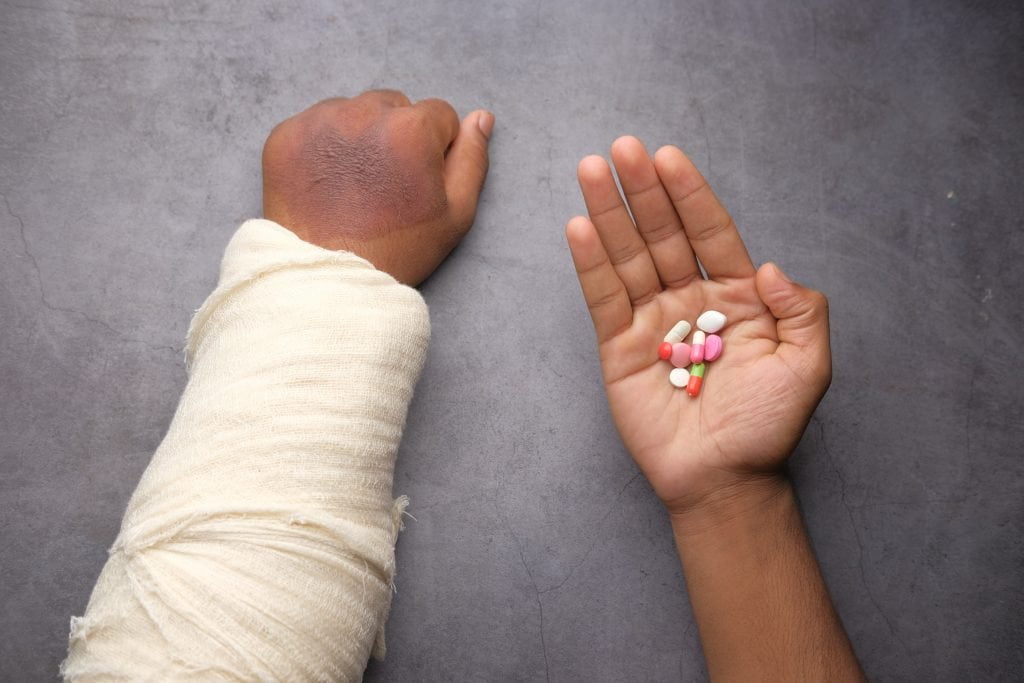As I mentioned in an article before, we are living in the society, times, and mindset of the quick fix, and that also relates to pain relief, as I’ll explain in the following paragraphs.
Different types of pain
I have my own classification for different types of pain. For example, that very nice soreness the day after a great workout is always welcome, as long as it doesn’t last much. A soreness that goes beyond 7 days might be an indicator that the training performed was possibly excessive for that person.
On the other side of the spectrum, we have acute pain caused by an accident, infection, wound, etc.
And finally, we have minor or chronic injuries, and these are referred mostly to soft tissues.
What’s our modern society doing these days about pain?
No matter what the type of pain is or where is it coming from, people are not willing to feel it, going directly to the quick fix, which normally is a pain killer or anesthetic, and it is well known and established by science that they have detrimental side effects on our health, affecting organs and systems like the liver, kidneys, brain, and gut amongst others.
The classical example is the regular headache. The most common situation when a person experiences a headache is to go for a painkiller. In a high percentage of the cases, the pain will go away and the person will continue with his/her normal life.
But how about stopping for a moment and going back in time to try to find what actually caused the headache? Was it something the person ate? Was the person in a different environment containing certain chemicals? Did the person experience a highly stressful situation? Or was it that the blood sugar went low because the time between meals was simply too long? Or maybe simply dehydration?
Let’s just say, for the sake of the example, that the person ate something he/she is sensitive to, and that triggered the headache. For an important number of people, monosodium glutamate (a neurotoxin used to enhance flavors) is a significant trigger for headaches. Doing this simple process (trying to find the cause) will prevent a headache in the future, and therefore, the use of a medication for pain, leading to a healthier individual.
What to do with the acute pain caused by an accident, infection, or wound? Well, you already know the cause, so address it the right way with the right health professional.
The importance of feeling pain
And for the case of minor or chronic injuries, I’ll share the experience with one of my speed motorcycle racers. He had an accident during the first heat of a race and had a small fracture on one of the bones on his foot and the pain didn’t allow him to put his foot on the floor. He said that he’d like to compete on the second heat and I don’t have the moral authority to tell him not to do that, as I did the same things before and once competed in a BMX National Championship with a cast in my hand that had the shape of the handle.
The doctor of the team checked him and said that he needed an anti-inflammatory and that if he was going to take part in the second heat, he’d need to numb the foot. I agree with the anti-inflammatory only because we needed to put his foot back in his boot, but I said no to the anesthetic. The reason was – he needed to feel pain! If he wouldn’t have experience pain, he might have done something that made that little fracture worse, not allowing him to go to the next competition. To make the story short, after one hour of ice on his foot and me holding his bike at the start of the second heat (because he was not able to support even his own weight on the ground), he placed second on the race. As expected, after he finished the second heat we went straight to the orthopedist and the fracture did not increase. If he would have got the anesthetic injected, the chances that the size of the fracture would increase were simply too high.
Find the cause
The same happens when there is a chronic injury, like shoulder, elbow, knee, lower back pain, etc. Doctors and patients simply want to get rid of the pain without even trying to understand what is the actual root cause. Normally they’ll prescribe/take a pain killer and will go back to train to make things worse for the structures that are experiencing the pain and for their general health.
The goal is always to find the root cause, fix it, and the pain will naturally go away without the need of harmful medications. In my experience, that root cause is normally related to excess tension of a muscle/tendon/facia, lack of activation of a muscle, scar tissues on the structures, adhesions between muscles and or facia, or other injuries that might have changed the natural mechanics of movement.
In order to find the cause of the problem, it’s always recommended to find one of our Instant Strength & Mobility certified students or a good and experienced ART practitioner.
Pain is one of the most beautiful feelings or sensations our bodies can have and it is there to protect us. Whenever we feel any kind of physical pain, our body is simply telling us that what we are doing is going to hurt us even more if we continue doing what we are doing.
As in anything else health-related, find the root cause, fix it, and be healthy!
Coach Carlos Castro

